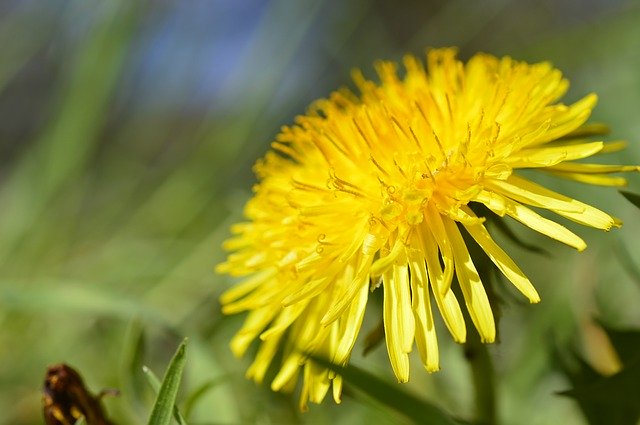
With so many types of weed killer available on the market, it can become quite confusing when comes a time when you have to pick the right one. A range and variety of herbicides will more than likely have you scratching your head whilst looking at a wall of products standing in aisle six. To make things a little easier for you, we try to break down the main types of weed killer that you can buy, their characteristics and when they are suitable to use.
The types of weed killer include contact, systemic, residual, selective and non-selective. It’s important to note that before buying any type of weed killer, selecting and using the wrong type on your lawn or affected area can cause serious harm. Also, the most popular herbicide, ‘Roundup’, is a contact, systemic and non-selective weed killer.
Contact Weed Killers
As its name suggests, this type of weed killer kills weeds as soon as they come into contact with it. Here, the herbicide is consumed by the stomata (tiny openings) of the plant’s leaf. However, in order for the weed killer to be effective, the stomata need to be open. These are only open when the plant is actively growing and throughout the day whilst the process of photosynthesis is taking place. Therefore, contact weed killers need to be applied to the target plants during the growing season, to green, living foliage and early in the day. This gives the herbicide the whole duration of the day to work its way into the stomata.
Contact weed killers are used by many homeowners and lawn care enthusiasts as they have no impact on the garden soil surrounding the target plants. A popular type of contact herbicide is glyphosate, when applied, becomes locked inside soil particles, making it unavailable to plant root, resulting in it becoming redundant in the soil. Contact weed killers take approximately two weeks to take full effect and are a superb choice for tackling and controlling annual weeds. To manage perennial weeds, however, two or maybe three applications of contact herbicide are required.
Systemic Weed Killers
The majority of herbicides fall under the category of systemic weed killers. This means that on entry into the plant, the herbicide works its way through the plant’s transport system to target and kill all of its areas. An example of a systemic week killer in action would see it entering a plant through its foliage and working its way all the way down the plant until it reaches the roots, where it eventually kills the weed completely.
Residual Weed Killers
These type of weed killers are also referred to as soil acting weed killers. Careful consideration must be taken when selecting and using these herbicides as their application will poison the soil surrounding the target plant, rendering it inactive and useless for growing any further plants, weeds or flowers. The majority of residual weed killers sit in the soil for months, preventing any form of growth from taking place. However, lesser plants such as algae and lichens are not affected by these herbicides. The ideal areas to use residual week killers are hard-standing areas such as paths, driveways and patios and not areas where you may grow plants or vegetables in the near future.
Selective Weed Killers
These herbicides work to kill a particular plant whilst leaving surrounding soil and plants unharmed. For example, certain selective weed killers aim to only target broad-leaved plants such as buttercup, dandelion and daisy, whilst having zero effect on narrow-leaved plants such as grass. As the two types of plants are two early evolutionary divisions within the plant kingdom, they have two very different vascular and transport systems. Meaning selective herbicides can be created to target one of these two plant types.
Non-Selective Weed Killers
As you may have already guessed, non-selective weed killers are herbicides which work to kill everything that they come into contact with, similar to contact weed killers. Unlike contact herbicides, however, non-selective weed killers will kill or severely damage any and every plant that they touch. It is therefore extremely important to take extra care when using and applying this type of herbicide. Be sure to never spray during windy conditions, never walk over areas that may have been sprayed previously, cover plants that are near the target weed and handle chemicals and knapsacks sprayers with care.
Here at Total Weed Control, you’ll be glad to hear that we use appropriate weed killers whenever necessary. Matching both the weed type and the result that you’re looking to get. Our team of weed control specialists have years of training and experience in the use and application of herbicides, so you can rest assured knowing that your lawn or effected area will be in safe, professional hands.
To learn more about our weed control services, simply click below. You can also get in touch with a member of our team if you would like to enquire about weed control treatment on your property.
Our Weed Control Services >
